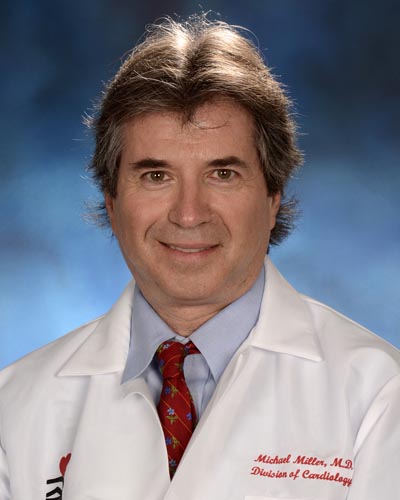June 20, 2016

Those Who Ate Muffins Made with Safflower Oil Lost More Weight, Saw Greater Health Improvements
It's hard to think of the typical muffin, often loaded with saturated fat and a high calorie count, as a healthy food option. But muffins made with healthier fats yielded unexpected health benefits during a first-of-its-kind clinical study at the University of Maryland School of Medicine.
The study looked at a way to substitute animal-based saturated fats for plant-based unsaturated fats in muffins made for patients with the metabolic syndrome, a group of risk factors that affect about a third of adults in the United States, increasing their chance of cardiovascular disease and type 2 diabetes.
The researchers tested the two varieties of unsaturated fats: monounsaturated fats (MUFA) and polyunsaturated fats (PUFA). Compared to MUFA, patients in the PUFA group lost more weight, had lower blood pressure and triglyceride levels, and increased dilation of blood vessels (a healthy response). Twenty-five percent of PUFA participants converted from metabolic syndrome to metabolically normal vs. 10 percent of MUFA subjects.

Miller adds that while more research is needed after this small study, "The bottom line from our research is that PUFA may be the substitute of choice for saturated fat, especially in men and women who are overweight, have hypertension, diabetes, or the metabolic syndrome."
Miller says the response in this study, published in the Journal of Clinical Lipidology, may confirm other research findings about polyunsaturated fats: "Recent data suggest that PUFA (but not MUFA) activates signaling in the brain to reduce appetite, so this may be one reason for the bigger weight drop between the groups."
Study Design
A total of 39 adult men and women with metabolic syndrome completed the study, designed to measure several cardiovascular risk-associated parameters. Each participant's weight was stabilized on an American Heart Association Step 1 diet for one-two months prior to the six-month period of the study. Participants were also encouraged to exercise by walking at least three days a week for 30-45 minutes during the study.
Participants were randomized to either a low calorie MUFA-enriched or PUFA-enriched diet for six months, aimed at reducing calorie consumption by 300 per day. The relative percentage of carbohydrates, fat and protein were kept constant, but the saturated fat content was reduced in both groups from 30 percent to 25 percent of total fat intake and replaced with either MUFA or PUFA.
Participants consumed three MUFA (high-oleic sunflower oil) or PUFA (safflower oil) enriched muffins daily. The 3.5-once muffins each contained 275 calories. All muffins were prepared in the metabolic kitchen of the United States Department of Agriculture (USDA) in Beltsville, Md., and kept frozen in a canister until use. Participants met with a registered dietitian weekly for the first four months and then biweekly to collect a fresh supply of muffins and reinforce individual dietary and weight loss recommendations.
"The muffins were from a USDA recipe developed specifically for this study, and both varieties tasted really good," says Dr. Miller.
"This study suggests how a simple recipe modification may be used to help change the course of serious and increasingly prevalent metabolic abnormalities," says E. Albert Reece, MD, PhD, MBA, vice president for medical affairs at the University of Maryland and the John Z. and Akiko K. Bowers Distinguished Professor and dean of the University of Maryland School of Medicine. "The study also illustrates that treating the metabolic syndrome involves a multi-disciplinary approach, not just a healthy diet, but also an exercise regimen, careful monitoring of patients and individual reinforcement of goals and recommendations."
A person meets the criteria of the metabolic syndrome if they have three or more of the following metabolic abnormalities: blood pressure at 130/85 mm Hg or above; fasting glucose of 100 mg/dL or higher; waist circumference 40 inches or more in men and 35 inches in women; triglyceride levels at 150 mg/dL or more, and high-density lipoprotein cholesterol (HDL-C) greater than 40 mg/dL in men and 50 in women.
This study was supported by a VA Merit Grant Award to the Baltimore VA Geriatric Research, Education and Clinical Center and as part of an NHLBI-funded Nutrition Obesity Research Center award.
Miller and his team are considering evaluating other healthy PUFA fats, including plant- and marine-derived omega-3s.
About the University of Maryland School of Medicine
The University of Maryland School of Medicine was chartered in 1807 and is the first public medical school in the United States and continues today as an innovative leader in accelerating innovation and discovery in medicine. The School of Medicine is the founding school of the University of Maryland and is an integral part of the 11-campus University System of Maryland. Located on the University of Maryland’s Baltimore campus, the School of Medicine works closely with the University of Maryland Medical Center and Medical System to provide a research-intensive, academic and clinically based education. With 43 academic departments, centers and institutes and a faculty of more than 3,000 physicians and research scientists plus more than $400 million in extramural funding, the School is regarded as one of the leading biomedical research institutions in the U.S. with top-tier faculty and programs in cancer, brain science, surgery and transplantation, trauma and emergency medicine, vaccine development and human genomics, among other centers of excellence. The School is not only concerned with the health of the citizens of Maryland and the nation, but also has a global presence, with research and treatment facilities in more than 35 countries around the world. For more information, visit http://medschool.umaryland.edu.
About the University of Maryland Medical Center
The University of Maryland Medical Center (UMMC) is comprised of two hospitals in Baltimore: an 800-bed teaching hospital — the flagship institution of the 12-hospital University of Maryland Medical System (UMMS) — and a 200-bed community teaching hospital, UMMC Midtown Campus. UMMC is a national and regional referral center for trauma, cancer care, neurocare, cardiac care, diabetes and endocrinology, women's and children's health, and has one of the largest solid organ transplant programs in the country. All physicians on staff at the flagship hospital are faculty physicians of the University of Maryland School of Medicine. At UMMC Midtown Campus, faculty physicians work alongside community physicians to provide patients with the highest quality care. UMMC Midtown Campus was founded in 1881 and is located one mile away from the University Campus hospital. For more information, visit www.umm.edu.
Learn More
Contact
Office of Public Affairs
655 West Baltimore Street
Bressler Research Building 14-002
Baltimore, Maryland 21201-1559
Contact Media Relations
(410) 706-5260
Related stories

Tuesday, January 23, 2018
Novel Gene Mutations Linked to High HDL Cholesterol and Apparent Protection from Heart Disease
Researchers at the University of Maryland School of Medicine (UMSOM) have uncovered genetic mutations that may explain why people with high levels of high-density lipoprotein (HDL) cholesterol, the “good cholesterol,” have a reduced risk of coronary heart disease.
